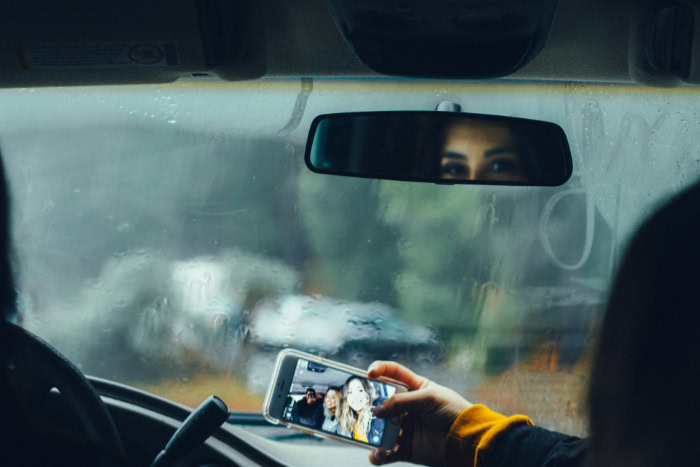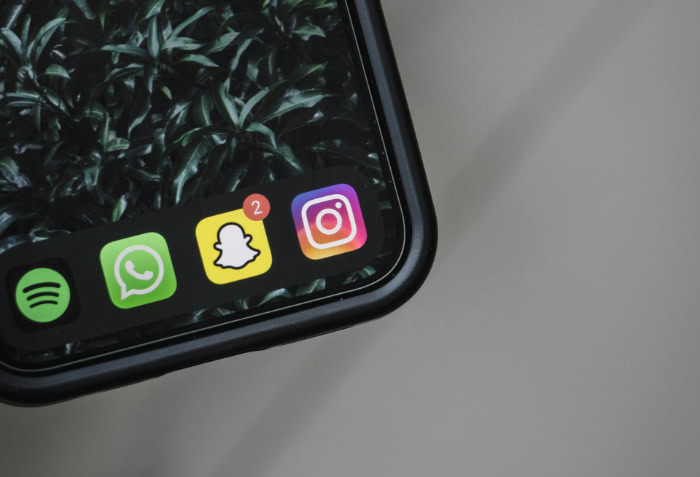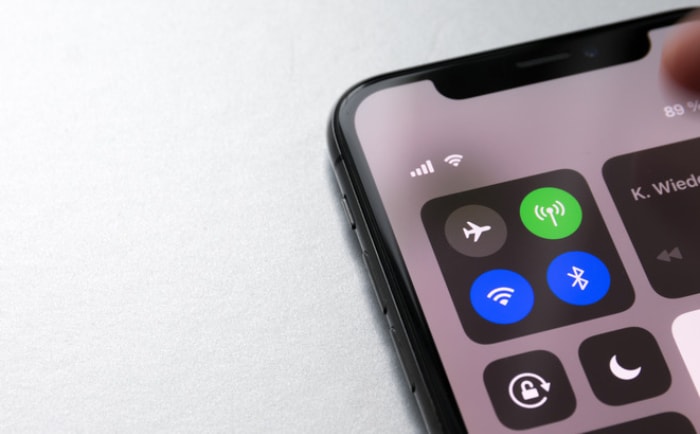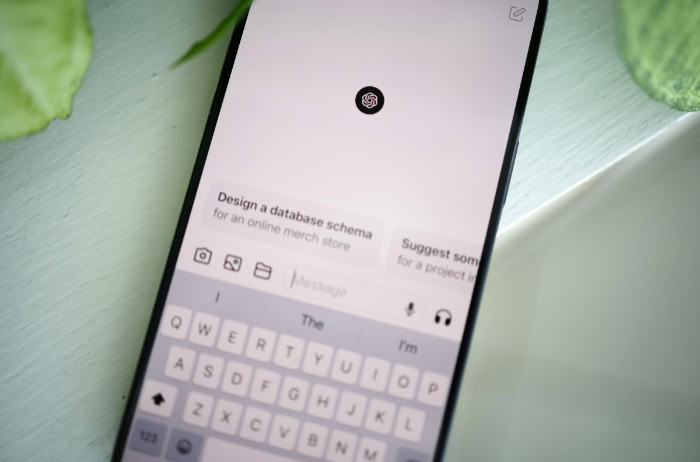What Is Snapchat? Why It’s So Popular

Snapchat stands out in the social media market by prioritizing temporary moments over permanent records. This mobile app allows users to share photos, videos, and messages that disappear seconds after viewing or 24 hours after posting.
Its massive appeal among teens and young adults stems from this ephemeral nature combined with playful augmented reality filters that encourage creativity. While it offers a fun way to stay connected, the platform also presents distinct challenges regarding privacy and content exposure.
What Is Snapchat?
Snapchat acts as a multimedia messaging and social media application developed by Snap Inc. that is available on both Android and iOS devices. It distinguishes itself from other social networks by prioritizing visual communication over text-based updates or permanent profiles.
The app opens directly to the camera rather than a content feed to encourage immediate creation.
Defining The Multimedia Service
The service functions primarily as a camera-first messaging tool where visuals take precedence over text. Users communicate through “Snaps,” which are photos or videos that can be customized with filters, captions, and drawings before being sent to friends.
While it shares similarities with other social platforms, the focus remains on capturing interactions as they happen rather than curating a polished digital identity.
Sharing The Moment
The specific design philosophy behind Snapchat is the ephemeral nature of the content shared on the platform. Messages and Snaps sent directly to friends are programmed to delete automatically after they have been viewed or after a set short period.
Content posted to the “Stories” feature remains visible for 24 hours before vanishing. This structure mimics the flow of natural conversation where words are spoken and then disappear, which reduces the pressure to produce perfect images and encourages more authentic sharing.
Evolution Of The Platform
The application started as a simple utility for sending disappearing photos but has since expanded into a complex ecosystem. It now hosts a variety of features including “Discover,” where users watch content from publishers and creators, and “Spotlight,” which features popular short-form videos.
The integration of augmented reality lenses and location-based maps has further broadened its scope beyond simple messaging.
How Snapchat Works

The application distinguishes itself by opening directly to a camera interface rather than a content feed or menu. Users interact with three primary areas known as the Camera, the Chat screen, and the Stories page.
This design encourages immediate creation and sharing rather than passive consumption. The platform relies on swiping gestures to move between these different functions.
Snaps, Chats, And Stories
The fundamental unit of communication on the platform is a “Snap,” which consists of a photo or video captured through the in-app camera. Users can customize these images with text captions, drawing tools, and stickers before sending them to specific friends.
Once the recipient views a Snap, the service automatically deletes it from the server and the device. Users may also adjust the viewing time limit for photos or set videos to loop infinitely.
Messaging features extend beyond visual content to include text-based chats and group conversations. The chat function adheres to the platform's ephemeral nature by clearing message history immediately after users leave the conversation window.
Participants can preserve specific messages, addresses, or saved media within the chat thread by tapping on them to save the content manually.
Stories allow users to share moments with a broader audience without sending individual messages. A Story acts as a chronological collection of Snaps that remains visible to friends or the public for 24 hours.
Friends view these narratives in a continuous stream, and the poster can see exactly who has viewed each segment of their Story.
Creative Tools And Camera Experiences
The camera interface includes advanced augmented reality features known as Lenses. Lenses use facial recognition technology to apply real-time 3D effects, animations, and masks to a user's face or the environment around them.
These effects range from beauty filters and voice changers to interactive games that respond to facial movements.
Visual expression is further enhanced through stickers, Geofilters, and Bitmoji avatars. Geofilters are location-specific overlays that become available when a user is in a certain city, event, or landmark.
Bitmoji allows users to create a personalized cartoon avatar that appears in stickers and on the map, adding a layer of personality to standard interactions.
While most content disappears, the Memories feature provides a way to permanently archive personal media. Users can save Snaps and Stories to a private gallery within the app rather than to their phone's camera roll.
For sensitive content, a “My Eyes Only” section within Memories protects images and videos behind an additional password or biometric lock.
Discovery And Map Features
The platform offers entertainment options separate from personal social circles through the Discover and Spotlight sections. Discover hosts curated content from media publishers, news outlets, and verified creators.
Spotlight functions as a feed for short-form viral videos similar to other video-sharing apps, where algorithms surface popular clips based on user engagement.
Snap Map provides a visual interface for seeing the physical location of friends. Users appear as their Bitmoji on a world map, allowing connections to see where they are in real-time if they have enabled location sharing.
The map also highlights “heat spots” where many Snaps are being posted publicly, indicating concerts, festivals, or breaking news events happening nearby.
Who Uses Snapchat And What For?
The platform serves a distinct community that values privacy and speed over permanent public records. While it originated as a tool for teenagers, its utility has attracted a wider range of demographics who appreciate its unique approach to digital communication.
Users generally gravitate toward the app for its ability to facilitate real-time connection without the pressure of maintaining a curated feed.
Main Audience And Demographics
Teenagers and young adults constitute the most active and significant portion of the user base. The design resonates particularly well with younger generations who prefer visual communication methods over traditional text messaging.
Although the core demographic skews young, adoption has spread to older adults who use the platform to stay connected with family members.
The service strictly requires users to be at least 13 years old to create an account. This age restriction aligns with legal standards for digital privacy, and the company provides specific resources to help parents and educators manage safety for younger teens.
Unlike public-facing networks where the goal is often to broadcast to a wide audience, this app fits into daily habits as a tool for close, private interactions among real-life friends.
Everyday Social Uses
People primarily use the application for casual and low-pressure conversations. The temporary nature of Snaps allows friends to share silly faces, quick updates, or mundane moments that they might not feel comfortable posting on a permanent profile.
This creates a sense of intimacy and spontaneity that is often missing from other social feeds.
Sharing daily experiences through Stories and group chats helps users feel connected despite physical distance. Video calls and voice chats further enhance this sense of presence, allowing for hanging out virtually in a way that feels less formal than a scheduled call.
Beyond personal messaging, many users turn to the app to consume bite-sized entertainment and news from verified creators and media publishers.
Business And Creator Uses
Brands leverage the platform to reach younger audiences through immersive advertising formats. Companies often create Sponsored Lenses or Geofilters that users can apply to their own photos, turning the advertisement into a shared experience.
Discover channels allow publishers to present news and entertainment in a vertical, mobile-friendly format that fits the app's interface.
Creators and influencers build loyal followings by posting behind-the-scenes content to their Stories and reaching new viewers through Spotlight. The platform works well for personalities who want to show a more authentic, unpolished side of their lives.
However, it may not suit every strategy, particularly for those whose content relies on searchability or long-term archival value, as the ephemeral design limits how long posts remain accessible.
Benefits, Limitations, And Safety Considerations

Every social platform involves a trade-off between connectivity and privacy, and Snapchat is no exception. The app offers distinct advantages for those seeking a more casual way to communicate, yet it also introduces specific risks related to its temporary nature and discovery features.
Primary Benefits For Users
The most significant appeal of the platform lies in its ephemeral design. The “delete by default” mechanism relieves the pressure to present a curated, perfect life, which is a common source of anxiety on other networks.
Users feel more free to be spontaneous and authentic because they know their silly faces or unpolished updates will not become a permanent part of their digital footprint.
Rich creative tools also set the experience apart from standard texting apps. The integration of augmented reality lenses, drawing tools, and stickers transforms basic communication into a highly visual and playful form of expression.
This encourages creativity and makes daily interactions more entertaining than simple text bubbles.
Furthermore, the app emphasizes close connections over broad broadcasting. Unlike platforms built around accumulating followers and likes from strangers, this service focuses on maintaining relationships with real-life friends.
The interface prioritizes one-on-one chats and small group interactions, which fosters a more intimate social environment.
Important Limitations And Risks
A dangerous misconception exists regarding the permanence of shared content. While messages are designed to disappear, recipients can easily bypass this feature by taking a screenshot or using a second device to photograph their screen.
Relying on the app's temporary nature can create a false sense of security that may lead users to share sensitive or compromising images they would not post elsewhere.
The “Discover” and “Spotlight” sections introduce the risk of exposure to inappropriate material. Although the company attempts to moderate these feeds, users can still encounter mature themes, clickbait, or suggestive content that may not be suitable for all age groups.
This shifts the experience from a private messaging tool to a public media consumption hub with less predictable safeguards.
Direct contact features also carry inherent risks regarding harassment and predatory behavior. Younger users are particularly vulnerable to pressure from peers to share explicit images, often referred to as “sextortion“.
Additionally, the ability for strangers to add users via username searches can open the door to unwanted contact if privacy settings are not strictly managed.
Privacy, Security, And Controls
The application provides robust tools for managing who can interact with a user. Account holders can customize their settings to ensure that only added friends can send them Snaps or view their Stories.
The “Ghost Mode” feature on Snap Map allows users to completely hide their physical location while still being able to see where their friends are.
Safety extends to managing unwanted interactions through blocking and reporting mechanisms. Users can block specific individuals to prevent any future contact or report accounts that violate community guidelines.
These reports help the moderation team identify and remove bad actors from the platform.
While the app promotes privacy, it is not a lawless zone. The company retains certain data and will cooperate with law enforcement agencies during investigations into illegal activities.
Deleted content is typically removed from servers, but metadata and saved chats can still be retrieved under specific legal circumstances.
Getting Started And Using Snapchat Responsibly
Entering the ecosystem of this application requires a straightforward setup process and an awareness of how to maintain a secure digital presence. New users can get up and running within minutes, but taking the time to configure privacy controls immediately ensures a safer experience from the very first login.
Setting Up Your Account
The process begins by downloading the application from the relevant app store and creating a unique login credential. Users should choose their username carefully during this phase, as the platform has historically made it difficult or impossible to change this identifier later without creating a completely new account.
After the basic registration, the app prompts you to create a Bitmoji, which serves as your digital avatar across the map and within chats.
Connecting with others happens through syncing phone contacts, scanning unique QR-like Snapcodes, or manually searching for usernames. While it might be tempting to add a large number of people immediately, experts recommend being highly selective and only connecting with people you know and trust in real life.
This selectivity acts as the first line of defense against unwanted interactions and privacy breaches.
Before sending any messages, new users should navigate to the settings menu to review their privacy configurations. The default settings may not be strict enough for everyone, so it is crucial to manually adjust who is allowed to contact you, view your Story, and see your location on the map.
Enabling “Ghost Mode” immediately prevents your location from being broadcast to friends until you are ready to share it.
First Steps In The App
Navigation relies almost entirely on swiping rather than tapping a bottom menu bar. The app opens directly to the Camera screen, while swiping right reveals the Chat interface and swiping left displays Stories and Discover content.
The Profile screen, found by tapping the icon in the top corner, houses settings, friend requests, and your Bitmoji customization options.
Creating content is as simple as tapping the large circular button to take a photo or holding it down to record a video. Once the image is captured, a suite of creative tools appears on the screen, allowing you to add text, drawings, stickers, or augmented reality filters before sharing.
You then choose to send this creation directly to specific friends for a private conversation or post it to your Story for all your connections to see for the next 24 hours.
The Stories and Spotlight sections offer an endless stream of content, which necessitates a mindful approach to consumption. It is easy to lose track of time while watching the auto-playing videos from creators and publishers.
Users should remain aware of how long they spend passively scrolling and ensure that their time on the app focuses primarily on active communication with friends.
Safe And Healthy Use Habits
Parents and caregivers play a vital role in establishing a healthy relationship with the app by discussing expectations early on. Open conversations about what types of photos are appropriate to send and the potential consequences of sharing sensitive information are often more effective than strict technical bans.
Utilizing the “Family Center” features allows guardians to see who their teens are talking to without reading the actual content of the messages.
Responsible usage involves thinking critically before pressing the send button. Even though the platform promises that images will vanish, nothing prevents a recipient from taking a screenshot or using another camera to capture the screen.
Users must operate under the assumption that anything they send could potentially become permanent and public.
Maintaining a balance between digital interaction and offline life prevents the app from becoming a source of stress. Constant notifications and the “Snapstreak” feature, which gamifies daily communication, can create a sense of obligation to log in every day.
Users should feel empowered to break streaks or turn off notifications to ensure the app remains a fun tool for connection rather than a demanding daily chore.
Conclusion
Snapchat stands apart in the social media market by prioritizing visual immediacy over permanent digital records. Its core identity revolves around ephemeral messaging and creative augmented reality tools that foster spontaneous interaction among close friends.
Rather than building a public brand or accumulating followers, the platform encourages users to share unpolished moments that disappear by design.
Deciding to integrate this app into your daily routine or your family's digital life requires a careful assessment of both its entertainment value and its inherent risks. The freedom of temporary sharing offers a relief from social pressure, but it demands vigilance regarding privacy settings and content exposure.
Users must balance the appeal of playful communication with the reality that no digital content is truly temporary if a recipient chooses to save it.
Approaching the platform with a clear plan ensures a positive experience. By mastering the available safety controls and establishing clear boundaries for usage, individuals can enjoy the benefits of visual connection without compromising their security.
The most effective way to use the service involves making it serve your specific communication needs while remaining aware of its limitations.


